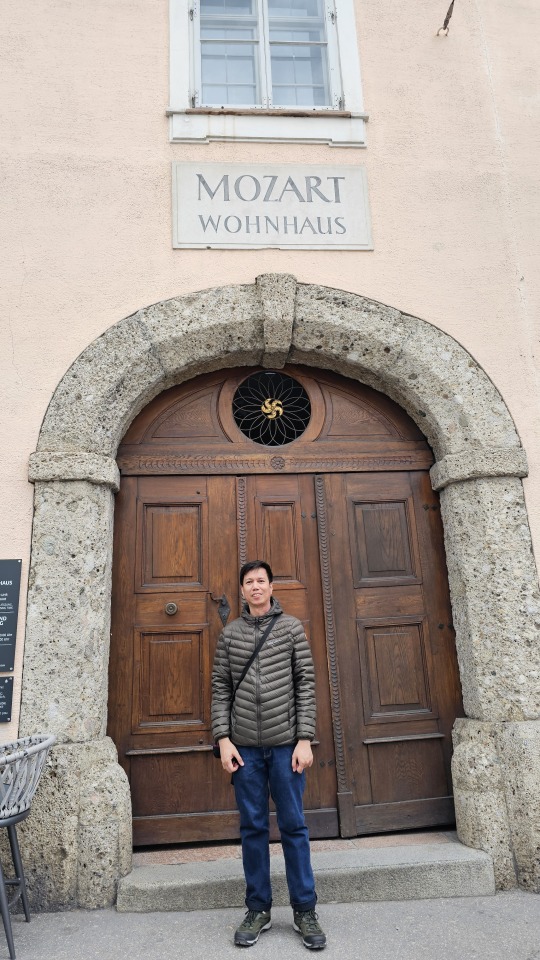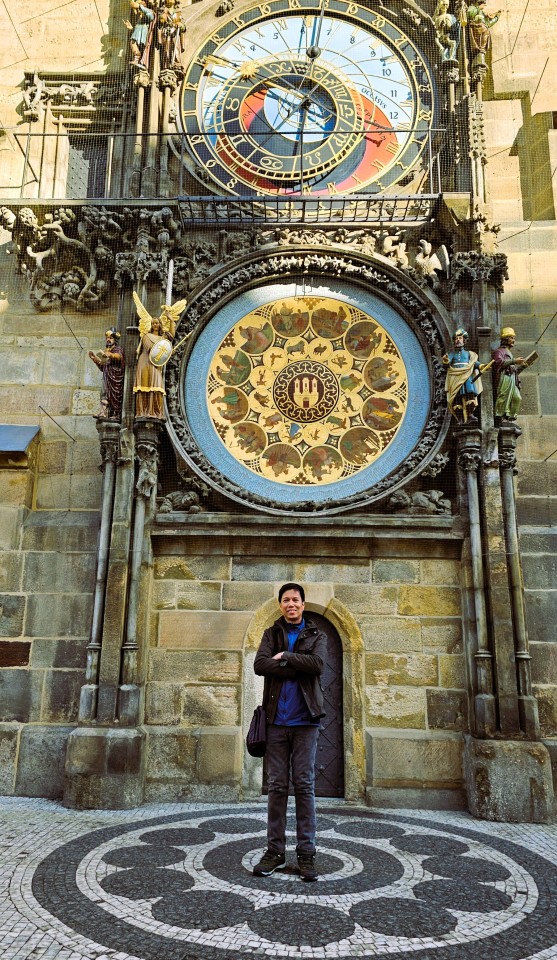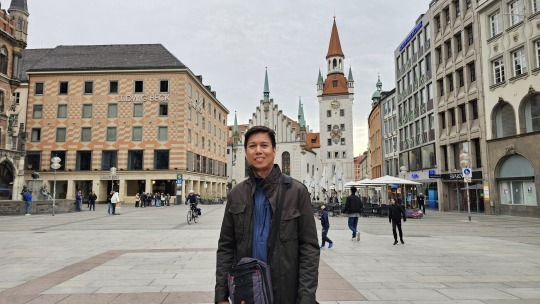Don't wanna be here? Send us removal request.
Text



Tromsø, Romsa, or Tromssa is a city in Tromsø Municipality in Troms county, Norway. The city is the administrative centre of the municipality as well as the administrative centre of Troms county. The Diocese of Nord-Hålogaland and its Bishop are based at the Tromsø Cathedral in the city.
3 notes
·
View notes
Text

Salzburg is the where Mozart was born and … It's located at the western reaches of Austria about an hour and a half away from Munich by train.
1 note
·
View note
Text

From 1773 to 1787, the Mozarts lived at the so-called "Dance Master's House", today's Mozart Residence on Makartplatz. The spacious eight-room apartment on the first floor is now home to a museum.
3 notes
·
View notes
Text

The Metropolitan Cathedral of Saints Vitus, Wenceslaus and Adalbert is a Catholic metropolitan cathedral in Prague, and the seat of the Archbishop of Prague. Until 1997, the cathedral was dedicated only to Saint Vitus, and is still commonly named only as St. Vitus Cathedral.
#roviell#cablao#roviellcablao#cablaoroviell#tejada#roviell tejada cablao#prague#castle#vitus#st vitus
1 note
·
View note
Text

Top of Germany: At 2,962 metres, the Zugspitze is Germany's highest mountain. Threatened ice worlds: Zugspitze is home to one of Germany's last glaciers – but the “eternal ice” on the Zugspitze is also acutely threatened by climate change.
1 note
·
View note
Text

Cathedral of Our Lady, Tromsø
The Cathedral of Our Lady, also commonly known as the Church of Our Lady, is the Catholic cathedral of the city of Tromsø, Norway, and seat of the prelature of the same name. It is the northernmost Catholic cathedral in the world. It is located on the Erling Bangsunds square.
1 note
·
View note
Text

Tromso. In comparison, the temperatures in Tromsø are relatively mild in winter, considering the latitude. On the coldest nights of the year, the temperature can drop to -14 °C (7 °F). The record low temperature in Tromsø was -20 °C (or -4 °F), which was recorded in February 1985 and January 1987. There is no need to worry.
1 note
·
View note
Text

Salzwelten Salzburg
The salt mine in the Salzburgerland region. At the world's oldest salt mine ever to open its tunnels to visitors, as of just recently it seems that no (salt) stone has been left unturned! We now welcome you in a newly designed entrance and service area.
1 note
·
View note
Text

Prague Astronomical Clock
The oldest part of the Orloj, the mechanical clock and astronomical dial, dates back to 1410, when it was created by clockmaker Mikuláš of Kadaň and Charles University professor of mathematics and astronomy Jan Šindel. The first recorded mention of the clock was on 9 October 1410.[4] Later, presumably around 1490, the calendar dial was added and the clock facade was decorated with gothic sculptures.
Formerly, it was believed that the Orloj was constructed in 1490 by clockmaster Jan Růže (also called Hanuš); this is now known to be a historical mistake. A legend, recounted by Alois Jirásek, has it that the clockmaker Hanuš was blinded on the order of the Prague Councillors so that he could not repeat his work; in turn, he disabled the clock, and no one was able to repair it for the next hundred years.
1 note
·
View note
Text

During the reign and residence of King Olav V from 1957 to 1991, there was little funds for renovation, something the poorly-built original structure direly needed. King Olav would therefore mostly reside at Skaugum and the Bygdøy Royal Estate, but relocated to the palace in 1968 when he gave the Skaugum estate as a wedding gift to his son Crown Prince Harald and his bride Crown Princess Sonja. Shortly after his ascension, King Harald V started a comprehensive renovation project of the palace. The renovations and improvements, all made by Statsbygg, included new fire alarm systems, the construction of new bathrooms, kitchens, offices and a general restructuring of the palace. The King was criticized because of the amount of money needed to bring the palace up to a satisfactory state even if much of this went to rectify construction deficits from a century and a half ago. With the renovations completed, the King and Queen relocated from Skaugum to the palace in 2001 as the Skaugum estate was to become the new home of Crown Prince Haakon and his family.
The palace, like all royal residence in Norway, is guarded by His Majesty The King's Guard; the Royal Guards. Since public tours began in 2002, the general public has been able to view and appreciate the renovation and splendor that the palace now boasts. The daily changing of the guards has also become a popular tourist attraction in recent years.
1 note
·
View note
Text

Saint Bartholomew's Church
St. Bartholomew's (German: St. Bartholomä) is a Roman Catholic pilgrimage church in the Berchtesgadener Land district of Bavaria in Germany. It is named after Saint Bartholomew the Apostle (Bartholomäus in German), patron of alpine farmers and dairymen. The church is located at the western shore of the Königssee lake, on the Hirschau peninsula. It can only be reached by ship or after a long hike across the surrounding mountains. A first chapel at the lake was built in 1134 by the Provosts of Berchtesgaden. In 1697 it was rebuilt in a Baroque style with a floor plan modeled on Salzburg Cathedral, two onion domes and a red domed roof. The church features stucco work by the Salzburg artist Joseph Schmidt and a three-apse choir. The altars in the apses are consecrated to Saint Bartholomew, Saint Catherine, and Saint James respectively.
An annual pilgrimage to St. Bartholomew's is held on the Saturday after 24 August, starting from the Austrian municipality of Maria Alm and crossing the Berchtesgaden Alps.
Near the chapel lies the old hunting lodge of the same name. The lodge, which was first erected in the 12th century with the church, has been rebuilt several times. Until 1803, it was a private residence of the Berchtesgaden Prince-provosts; after their territory had been incorporated into the Kingdom of Bavaria in 1810, the building became a favourite hunting lodge of the ruling House of Wittelsbach; today it is an inn.
The church can be seen from a famous scenic viewpoint 743 meters above, which is called Archenkanzel.
1 note
·
View note
Text

Salzbergbahn funicle, Hallstatt, Austria | Strade, Sentiero
1 note
·
View note
Text









Northern Norway is dark from afternoon until late morning, and the northern lights frequently soar across the sky.Our bold claim is that this part of Norway, with its multiple islands, deep fjords and steep mountains, is among the world's most beautiful and interesting places to see the northern lights.
1 note
·
View note
Text


The Blue Church - Church of St. Elizabeth
1 note
·
View note
Text

Marienplatz , Marienplatz is a central square in the city centre of Munich, Germany. It has been the city's main square since 1158.
1 note
·
View note
Text


The Scream
The Scream is a composition created by Norwegian artist Edvard Munch in 1893. The Norwegian name of the piece is Skrik, and the German title under which it was first exhibited is Der Schrei der Natur.
1 note
·
View note
Text





The Königssee
The Königssee is a natural lake in the southeast Berchtesgadener Land district of the German state of Bavaria, near the Austrian border. Most of the lake is within the Berchtesgaden National Park.
1 note
·
View note